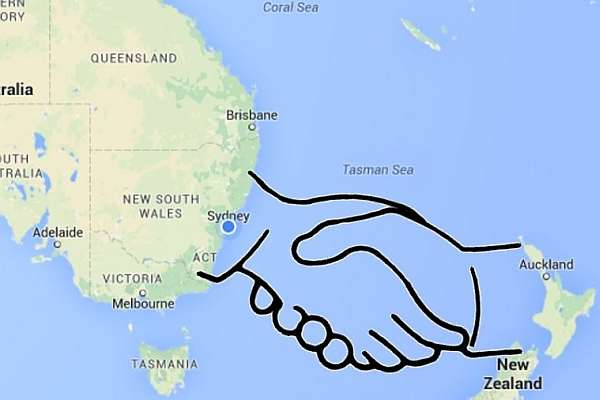Published on the 25/10/2018 | Written by Pat Pilcher

Trans-Tasman initiative re-invents the wheel…
Governments on both sides of the Tasman have kicked off a consultation phase for the introduction of an e-invoicing standard they say could deliver billions in business benefits to Kiwi and Aussie businesses over the next decade.
Many in the know must be wondering just what all the fuss is about as the e-invoicing hype sounds suspiciously like EDI (electronic document interchange), a technology that has been around for 40-plus years.
“Research estimates e-invoicing could result in benefits to the A/NZ economies potentially in excess of $30 billion over 10 years.”
However, although the proposed e-invoicing standard is nothing new, it still makes much business sense (which it should after having already been in use for decades). Because e-invoicing is a machine to machine process, there are fewer humans involved. The upshot is that e-invoices can flow from the sender to the appropriate application, such as order management systems, at the receiver’s end and error-free delivery processing can begin immediately. Because of this, e-invoicing should, in theory, be both quicker and more accurate.
The consultation round is aiming to get input on a pre-existing e-invoicing framework initially developed in Australia by the Australian Digital Business Council (DBC), an industry-driven initiative which involved numerous Australian government agencies.
The move is part of a broader policy goal that has seen the Australian and New Zealand governments committing to a process they branded as the Single Economic Market (SEM) agenda. Originally designed to create a seamless trans-Tasman business environment, SEM is the latest take on Closer Economic Relations. Both governments say that while SEM has helped to lower the costs of trans-Tasman business, e-invoicing will further streamline transaction processing.
According to an e-invoicing discussion paper released by MBIE, the arguments for embracing electronic invoicing are compelling. “Each year, A/NZ businesses process around 1.3 billion invoices. Paper and email-based invoicing are manually intensive and prone to human error resulting in increased processing costs and payment times for businesses. E-invoicing is the direct, electronic exchange of invoices between suppliers’ and buyers’ systems. E-invoicing is a clear opportunity to streamline business-to-business transactions, improving efficiency and reducing error handling, saving businesses time and money. Research estimates that e-invoicing could result in benefits to the Australian and New Zealand economies potentially in excess of $30 billion over 10 years.”
The paper also notes: “Research has not revealed any similar trans-Tasman or international e-invoicing governance arrangements involving both the public and private sectors that could be used as illustrative examples within, and provide guidance for this consultation.” In fact, EDI is based on a globally endorsed UN/EDIFACT standard.
Both governments have committed to embracing the standard. In their 2018 budget, the New Zealand Government created an operating fund to support e-invoicing, and in May the Australian Government also confirmed they were working to adopt e-Invoicing.
While no technology standards get discussed in the discussion document, the proposed standard does seem similar to the EDI standard developed in the 1970s.
EDI arose out of military logistics. The sheer complexity of the 1948 Berlin airlift saw vast amounts of materials being airlifted in and out of West Germany to defeat the Soviet blockade. The sheer volume of goods required electronic methods to not only track what was inward or outward bound, but what was destined to go where. This information was often transmitted using creakingly slow 300 baud modems.
Eventually, this evolved into the TDCC (Transportation Data Coordinating Committee) standard in the US for Freight Control Systems. In 1971, the London Airport Cargo EDP Scheme (LACES) also came into being at Heathrow airport. It allowed businesses to directly clear goods with UK Customs, reducing customs clearance time. LACES later got expanded into maritime traffic and document interchange format standards for ocean ports.
EDI is still very much in use today and is the default standard for purchase order/invoices and other shipping documents for many businesses. It is slowly being replaced with API standards as vendors provide external document gateways, which are often an XML version of earlier EDI standards.
A typical function of these are the e-commerce shipping status notifications we all receive when tracking online orders. So is the wheel being re-invented at great expense to taxpayers?
Initial reports suggest that widespread adoption by both governments is hoped to drive uptake and that a small non-profit trans-Tasman body would be set up to push the initiative. According to the MBIE discussion paper, trans-Tasman e-invoicing costs will get covered by charging transactional and licencing fees to offset costs. MBIE are seeking submissions on e-invoicing before 16 November.



























